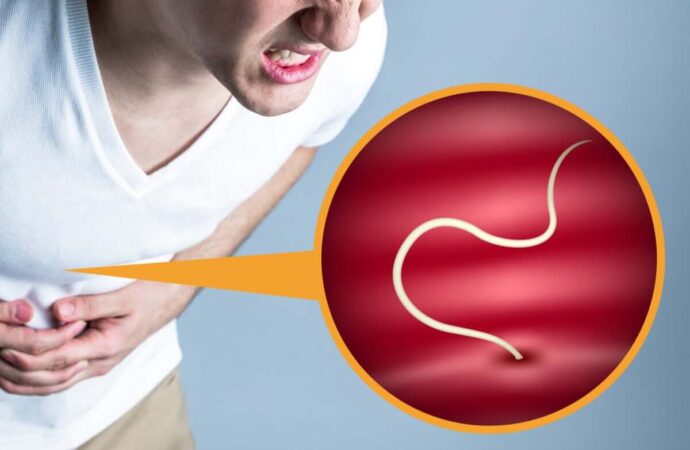When discussing foodborne illnesses, the spotlight often shines on harmful bacteria like Listeria monocytogenes, which have led to extensive recalls of salad greens, soft cheeses, and various meats. However, parasites—organisms that live on or inside humans and animals—are frequently overlooked, despite their potential to cause significant health issues. Understanding foodborne parasites is crucial, as they can be just as prevalent and dangerous as many bacterial illnesses highlighted in the media.
The Nature of Parasites
Parasites are typically very small organisms, some microscopic, that derive protection and nourishment from a host. They reside inside or on their hosts, reproducing within organs or tissues, and can be expelled through faeces. Depending on the type, some parasites can thrive undetected in a host for extended periods, leading to various health issues.
Parasites come in many forms, ranging from single-celled organisms like amoebas to larger worms visible to the naked eye. Notorious examples of human parasites include tapeworms (Taenia saginata), Giardia lamblia, roundworms, and scabies mites. These parasites can contaminate food and water, resulting in foodborne illnesses that affect millions worldwide.
How People Get Infected
Infection typically occurs when people consume contaminated food or water. Although many farm animals receive treatment to prevent parasitic infections, parasites can infiltrate food at any stage in the supply chain—from farming and production to delivery and packaging. For instance, food washed in contaminated water or grown in infected soil can carry parasites. Additionally, food handlers who unknowingly carry parasites can transfer them to food, leading to infections in unsuspecting consumers.
Symptoms and Impact of Parasitic Infections

Symptoms of parasitic infections can vary significantly based on the type of parasite. Common symptoms include:
- Diarrhea
- Nausea and vomiting
- Abdominal pain
- Unexplained weight loss
- Muscle aches
- Fatigue
- Skin rash
Some individuals may remain asymptomatic while unknowingly transmitting the parasite to others, who may develop symptoms later.
Common Foodborne Parasites
Certain foods are more likely to harbour parasites. Here are some common ones associated with foodborne infections:
- Giardia: Often found in untreated water, it is the most commonly identified intestinal parasite in Canada.
- Cyclospora: Transmitted through contaminated food or water, this parasite’s eggs are shed in the stool of infected individuals.
- Pinworms: Commonly spread by food handlers who fail to wash their hands after using the restroom.
- Tapeworms: Typically ingested through undercooked beef, pork, or fish, where the larvae develop into adult tapeworms in the intestines.
- Toxoplasma: Found in undercooked, contaminated meat and raw produce that hasn’t been adequately cleaned.
- Trichinella Spiralis: Referred to as “pork worm, this is found in rodents, pigs, bears, and humans. Responsible for the disease trichinosis, this infection is often linked to undercooked pork.
Types of Foods at Risk
Certain foods pose a higher risk for parasite transmission:
- Raw fruits and vegetables: These can harbour parasites, especially when imported. Proper washing can reduce risk, but it’s not always foolproof, particularly for hard-to-clean items like leafy greens.
- Raw Meat and Fish: Undercooked or raw fish (like sushi) and meat can harbour parasites. Importation and handling conditions can exacerbate this risk, making proper cooking essential to eliminate parasites.
Additional Sources of Parasites
Infection can occur not only through food but also via unsafe drinking water. Pets can also carry parasites; thus, close contact with pets may increase the risk of transmission. Swimming in contaminated water or using shared public facilities can further expose individuals to various parasites.
Prevention and Awareness
Preventing parasitic infections is crucial, as they can be challenging to eliminate once established in the body. Most instances of foodborne illness stem from poor hygiene practices, inadequate cleaning, and improper food handling. Awareness of symptoms is vital for early detection and treatment of parasitic infections.
- Cook food thoroughly: The most effective way to kill parasites is to cook food to a minimum internal temperature of 74°C (165°F).
- Practice proper handwashing: Food handlers should wash their hands for at least 20 seconds in hot water with liquid soap, especially after using the restroom.
- Source food responsibly: Food service establishments must obtain their food from reputable suppliers, particularly high-risk items like raw fish and shellfish.
- Inspect foods before acceptance: For fish, a firm texture and absence of a strong odour are good indicators of freshness.
Conclusion
In conclusion, while foodborne bacteria often receive more attention, parasites present a significant risk that should not be overlooked. Awareness of the types of parasites, their symptoms, and prevention methods is essential for safeguarding public health. By prioritizing safe food handling practices and being vigilant about food sourcing, both consumers and food service professionals can play a vital role in reducing the incidence of parasitic infections. Regular health check-ups and dietary vigilance can further help individuals maintain optimal health in a world where the risk of parasitic infection is ever-present.
 Food Manifest
Food Manifest 


















